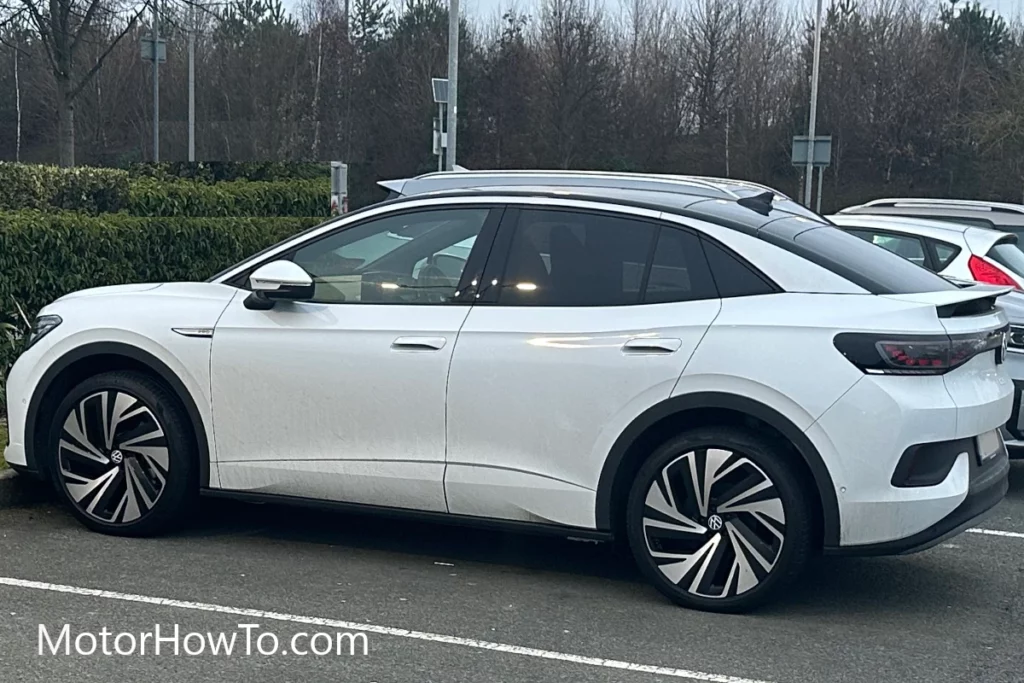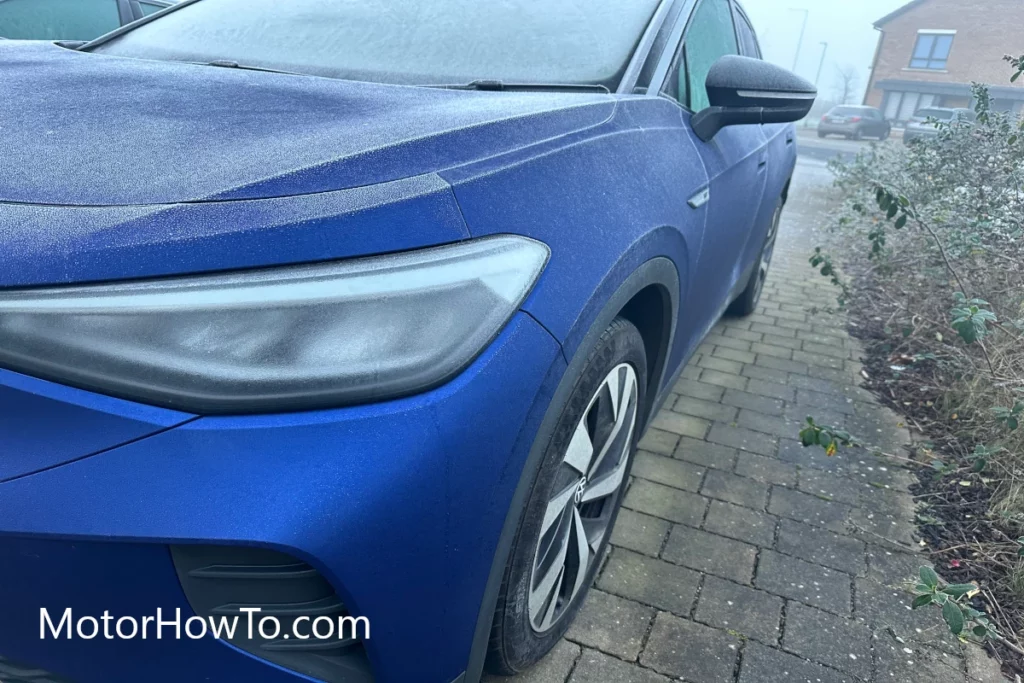Electric cars are becoming increasingly popular as a sustainable mode of transportation, but a common concern for drivers is keeping warm during the colder months.
Unlike traditional gasoline-powered cars, electric vehicles do not produce heat through their engines, so the question arises, how do electric cars provide a heater?
Electric cars provide heating through their specialized HVAC (heating, ventilation, and air conditioning) system. Unlike combustion engine cars, an electric car doesn’t have an engine so the HVAC system uses energy from the battery to generate heat. The HVAC system converts the electrical energy into heat, which is then circulated to warm up the cabin.

The answer lies in the unique design of an electric car’s power system and the ability to convert energy from the battery into heat.
This system provides warmth and regulates the temperature of the battery, ensuring maximum performance and range.
Understanding how this system works is essential for electric car owners.
By utilizing cutting-edge technology, electric cars can provide efficient solutions.
Related:
- Does Car Heater Work When Engine Is Off? (Explained)
- Is It Bad To Turn Your Car On/Off With Heater On? (Must Read)
- Does The Car Heater Use The Car Battery? (Explained)
How Does Electric Car Heater Work To Draw Less Power?
An electric car heater converts electrical energy from the battery into heat, which is then circulated in the cabin to provide warmth.
To minimize the power draw, the heater is designed to be highly efficient and uses the minimum energy necessary to heat the cabin.
The heater is integrated with the car’s HVAC (heating, ventilation, and air conditioning) system.
This highly efficient system helps regulate the battery’s temperature and the cabin.
One key aspect of electric car heating systems is heat pump technology.
A heat pump uses a small amount of energy to transfer heat from the outside air to the inside of the car, making it more efficient than traditional resistance heating.
The system can also use waste heat generated by the battery and motor to supplement the heating.
Another way electric car heaters minimize power draw is by using smart temperature control algorithms.
The heater can automatically adjust its output based on the ambient temperature, internal car cabin sensors and desired temperature inside the cabin, ensuring optimal performance and range.
This results in an effective and energy-efficient heating system, making it ideal for electric car owners who want to maintain comfort without sacrificing range.
How Long Can An Electric Car Heater Work?
The duration for which an electric car heater can work depends on several factors, such as the battery capacity, the heating system’s energy efficiency, and the outside temperature.
In general, an electric car heater can last anywhere from a few hours to the full range of the car, depending on usage.
The car’s HVAC system and its ability to use waste heat generated by the battery and motor to supplement the heating also affect the duration of the heater.
In general, an electric car heater can last anywhere from a few hours to the full range of the car, depending on usage.
The battery capacity is a key factor that determines the duration of an electric car heater.
Electric cars with larger battery capacities can provide more energy to the heating system, allowing it to run longer.
On the other hand, electric cars with smaller battery capacities may have shorter heating durations, especially in extremely cold weather conditions.
However, in most cases, the electric car heater should last for several hours, providing enough warmth for a comfortable drive.
Do Electric Cars Heat Well In Winter?
Electric cars can heat well in winter, provided they have a well-designed HVAC and efficient heating systems.
Using heat pump technology, waste heat recovery, and smart temperature control algorithms in electric car heating systems makes them highly effective in providing warmth even in cold weather conditions.
The electric car heating system is designed to regulate the battery’s and cabin’s temperature, ensuring maximum performance and range.
However, the performance of an electric car heater can be affected by the outside temperature, especially in extremely cold weather.
During extremely low temperatures, the heating system may have to work harder, drawing more energy from the battery, which can result in reduced range.
To mitigate this, some electric car manufacturers offer additional heating options, such as heated seats and steering wheels, that can provide comfort without using as much energy as the main heating system.
Do Electric Cars Have Heated Seats?
Electric cars can have heated seats.
Heated seats provide added comfort to drivers and passengers during colder months, and they work by using resistance heating elements built into the seat cushions and backrests.
Many electric car manufacturers offer heated seats as optional or standard equipment in higher trim levels.
The heating elements are powered by the car’s electrical system and are controlled by buttons on the center console or through the car’s infotainment system.
Heated seats effectively provide warmth without using much energy, as they only heat the body directly and do not have to warm the entire cabin.
This results in a more energy-efficient heating solution, which can help to extend the car’s range.
Also, heated seats can improve comfort and the driving experience, especially during colder months.
How Long Can An Electric Car Idle With Ac On?
The duration for which an electric car can idle with the AC depends on several factors, including the battery capacity, the energy efficiency of the AC system, and the outside temperature.
Generally, the longer the car is idling with the AC on, the more energy it will consume, reducing the car’s range.
The battery capacity is a key factor determining the duration of an electric car idling with the AC on.
Electric cars with larger battery capacities can provide more energy to the AC system, allowing it to run longer.
On the other hand, electric cars with smaller battery capacities may have shorter AC run times, especially in hot weather conditions.
However, in most cases, an electric car with a well-designed AC system should be able to idle with the AC on for several hours, providing a comfortable environment for the occupants.
Conclusion
Electric cars provide a highly effective and energy-efficient heating solution through their HVAC (heating, ventilation, and air conditioning) system.
The HVAC system is not only efficient but also intelligent and so converts electrical energy from the battery into heat, which is then circulated in the cabin to provide warmth.
The use of heat pump technology, cabin sensors, and smart temperature control algorithms minimizes the power draw, ensuring optimal performance and range.
The electric car heater’s duration depends on several factors, including the battery capacity, the heating system’s energy efficiency, and the outside temperature.
However, in most cases, the electric car heater should last several hours, providing enough warmth for a comfortable drive.
Heated seats are also available as an optional feature or standard equipment in some electric cars, providing added comfort to drivers and passengers during colder months.
The duration for which an electric car can idle with the AC on also depends on several factors, including the battery capacity, the energy efficiency of the AC system, and the outside temperature.
To maximize the range, it’s important to be mindful of energy consumption while using an electric car’s AC and heating system.
Sources
How Does An Electric Car Heater Work?
How Long Can an Electric Vehicle Keep You Warm
What to Know About Driving Your Electric Vehicle in Winter



